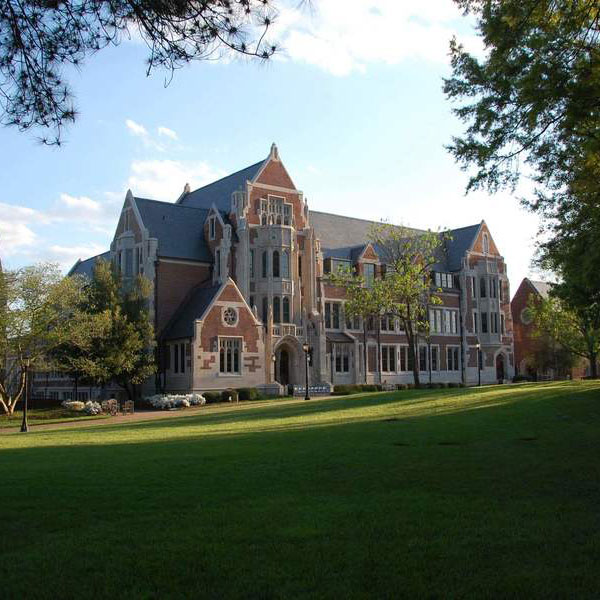Agnes Scott is currently pursuing several energy options for buildings and operations on campus.
Solar Power
If the Sunshine State were not already taken, Georgia might call itself so for all its potential for solar photovoltaic technology.
Agnes Scott College currently houses a total of six solar arrays on campus. The most recent and largest array was installed and energized in August 2024, as part of a collaborative Solar Energy Procurement Agreement (SEPA). This 184 kW system features bi-facial solar panels and will produce 58% of Main Hall’s projected electricity usage. Check out the July 2024 Atlanta Magazine article, The first building in DeKalb County to have electricity will soon go solar.
Four of the five arrays installed in 2014 are owned by third-party investors as part of Georgia Power’s Advanced Solar Initiative (GPASI). GPASI increased Georgia Power’s purchasing of solar energy. The program incentivizes small/medium solar projects by ensuring the purchase of surplus energy generated. The four externally-funded arrays’ environmental attributes have been retired in Agnes Scott’s name, generating about 150 metric tons of carbon emissions equivalent, or REC-like credits, that are only applicable to our carbon commitment with Second Nature. Read more about the case study here and read the August 2016 Atlanta Magazine article, Agnes Scott College leased its roof space for solar energy.
It is recommended that we pursue solar photovoltaic procurement at a large scale, as our energy efficiency efforts will only reduce our footprint by so much. We can begin incrementally adding solar to our energy generation, while continuing to execute efficiency projects, narrowing our dependency on fossil fuels.
In addition to reducing the college’s emissions, these arrays serve as an excellent research tool and model for other nonprofits and educational institutions looking to shift to solar energy. The original five solar arrays generate 342,200 kW hours per year of renewable energy, which is enough to power 31 average-sized U.S. homes. With the sixth solar array energized at the beginning of FY25, the Center will better understand its energy production in next year’s Greenhouse Gas Inventory. Plans are underway for Agnes Scott to add additional solar on campus in the near future. Combined with energy conservation and efficiency efforts, more solar will help ensure the college meets the goal of reducing its carbon footprint 100% by 2037.
Geothermal Energy
Agnes Scott College is a leader in the use of geothermal energy with two, 50,000 sq ft buildings heated and cooled by geothermal systems. The installation of these systems gained us high-ranking scores for LEED certification and the national campus sustainability rating, STARS. The educational benefit of these systems is invaluable, as well. Other colleges and organizations use our campus as a site of renewable energy innovation and an example of an institution that is truly investing in a sustainable future.
In 2014, Campbell Hall, our former science center built in 1951, was renovated and outfitted with a brand new hydro-geothermal HVAC system. Forty wells, 455 ft deep each, were dug in the adjacent Science Quad creating a closed-loop circuit. Refrigerant runs through these pipes, using the constant 64-degree temperature of the earth to heat the building in the winter and cool it in the summer. Additionally, all of the residual heat is used to heat the domestic hot water in the building.
The college’s second oldest building, Rebekah Scott Hall (built in 1905), underwent renovation between May 2017 to August 2018. The building is certified LEED Platinum by the U.S. Green Building Council. Like Campbell Hall, geothermal once again provides heating and air conditioning systems for Rebekah and also heats the domestic hot water. In addition, a former surface parking lot was turned into a geothermal field with a sustainable landscape planted instead of asphalt. The inclusion of these projects was a crucial element in keeping Agnes Scott on track with its climate action plan.
Geothermal HVAC systems are currently regarded as the most efficient HVAC system available on today's market. By using this system in conjunction with a dry cooler, Agnes Scott is saving 500,000 gallons of water a year.
That being said, it is recommended we prioritize more cost-effective carbon mitigation solutions going forward. Each geothermal HVAC system, from design to installation, has a high cost with comparatively low carbon-reduction value versus solar installation or other energy efficiency upgrades. Renewable energy technologies for heating are not usually very cost-effective. Therefore, it is important we consider many options before selecting the one best suited to our needs.
